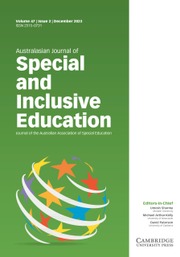Article contents
Canadian Preservice Teacher Views of Inclusive Physical Education
Published online by Cambridge University Press: 30 April 2018
Abstract
In this paper, we explored various aspects of Canadian preservice elementary school teacher views about inclusive physical education. Based on prior work by Loreman (2014) that broadly examined preservice teacher views on inclusive education, in this study we looked specifically at inclusive physical education using a different sample of participants in the same program. Preservice teachers were asked a series of open-ended questions relating to their understandings, feelings of teaching self-efficacy, attitudes, and concerns relating to inclusive physical education in elementary school. Their responses reflected a strong focus on ability diversity (e.g., disability) and indicated that inclusive physical education means that all students should be part of the learning environment or that some should be excluded in roughly equal proportion. Depending on the curricular dimension, their self-perceived levels of preparedness ranged from low to high. The participants also presented a strong case for the necessity of resources available for the teaching of inclusive physical education.
Keywords
- Type
- Original Articles
- Information
- Copyright
- Copyright © The Author(s) 2018
Footnotes
*This manuscript was accepted under the Editorship of Umesh Sharma.
References
- 1
- Cited by


